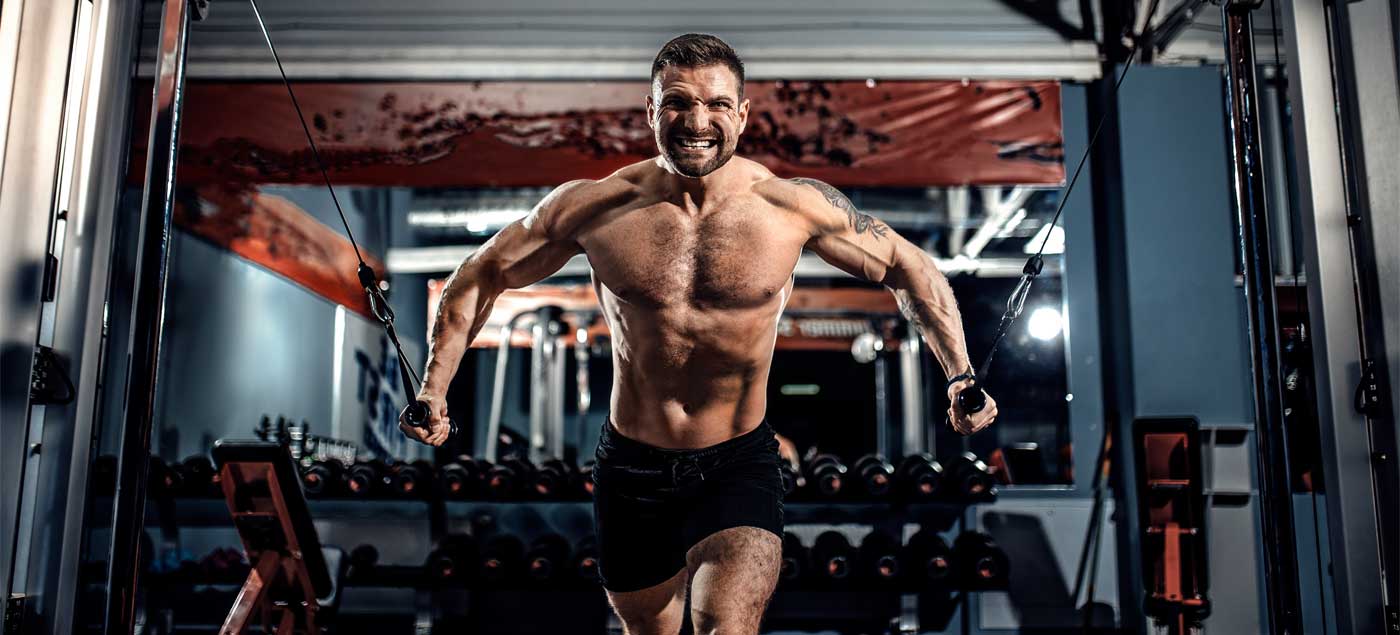How To Do Cable Crossovers
16th May 19

Cable crossovers are a favourite when it comes to pec workouts, but they’re not always easy to get right. We explain how to do cable crossovers properly, avoiding the common mistakes.
Our guide focuses on decline cable crossovers, as they are the most common variation, but these tips are also applicable to most angles.
Want to move fast? Jump to the right section below.
Cable Height

First, the height of the cables is essential. You don’t want them to be too high, but they should be above your head. As you step and lean slightly forward, it will give them the anchorage they need to hold you up and give your chest the contraction that is required for the exercise.
Foot Forward
Place your foot forward. Bend your knee slightly to make sure you have room to support yourself, as it needs to be your chest that is doing all the work. If your stance is off, it’s easy to rely on other areas of your body for added strength without you even realising it.
Arms Slightly Bent

Your arm angle is important than you think. Although your arms shouldn’t change in position as you’re moving, the angle needs to be there in the first place. A slight bend in your arm ensures that you aren’t putting too much unnatural stress on the ligaments in your arm. This is essential for preventing injury.
Pivot at Shoulders Only
Your shoulders need to be the only things that are moving in the cable crossovers. Everything else should stay locked into place to prevent you from drawing power from where it shouldn’t be. This will only hinder your progress at the end of the day, and it will hold you back in the long run. In fact, it’s one of the easiest ways to injure yourself. It is also crucial not to step too far back, as this would strain your shoulders.
As far as the weights are concerned, you need to keep them light – this exercise is not an overload one.
Crossover To Finish
It’s not uncommon to see people stopping as the cables meet in front of the torso. They are called crossovers for a reason. When the cables cross, that’s when your chest is getting the most significant part of the contraction, and where you’ll see the benefit of the exercise.
Overall, there’s not too much to consider here. A lot of it may seem like common practice depending on your familiarity with the exercise, but it’s still an easy one to get wrong. Take your time, warm-up, get your weight right, and cross the cables. A good chest stretch after the workout is always a good idea, too.

Before beginning any exercise or nutrition program, consult your physician, doctor or other professional. This is especially important for individuals over the age of 35 or persons with pre-existing health problems. Exercise.co.uk assumes no responsibility for personal injury or property damage sustained using our advice.
If you experience dizziness, nausea, chest pain, or any other abnormal symptoms, stop the workout at once and consult a physician or doctor immediately.









